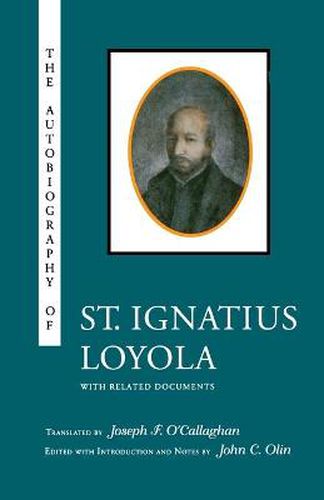Readings Newsletter
Become a Readings Member to make your shopping experience even easier.
Sign in or sign up for free!
You’re not far away from qualifying for FREE standard shipping within Australia
You’ve qualified for FREE standard shipping within Australia
The cart is loading…






Toward the end of his life, St Ignatius Loyola related the story of his earlier years - his pilgrim years - to an associate in Rome. He had lived and travelled, studied and taught, in a tumultuous world, and his religious experience, as profound or even mystical as it was, occurred in the context of history. He was aware of this, and he related the story of his most formative years with as lively a sense of actual circumstance as of divine direction. The contemplatio in actione that is said to characterise his mature spirituality finds its expression, and perhaps its source, in innate realism - that is, in his openness to life and in his day-to-day involvement in it. The autobiography begins abruptly in 1521 at the great turning point in the saint’s life - his injury when the French occupied that town and attacked its citadel. It then spans the next 17 years up to the arrival of Ignatius in Rome. They were the years of preparation for the establishment of the great religious order he founded and for its dynamic thrust in the turbulent Europe and the expanding world of his day.
$9.00 standard shipping within Australia
FREE standard shipping within Australia for orders over $100.00
Express & International shipping calculated at checkout
Toward the end of his life, St Ignatius Loyola related the story of his earlier years - his pilgrim years - to an associate in Rome. He had lived and travelled, studied and taught, in a tumultuous world, and his religious experience, as profound or even mystical as it was, occurred in the context of history. He was aware of this, and he related the story of his most formative years with as lively a sense of actual circumstance as of divine direction. The contemplatio in actione that is said to characterise his mature spirituality finds its expression, and perhaps its source, in innate realism - that is, in his openness to life and in his day-to-day involvement in it. The autobiography begins abruptly in 1521 at the great turning point in the saint’s life - his injury when the French occupied that town and attacked its citadel. It then spans the next 17 years up to the arrival of Ignatius in Rome. They were the years of preparation for the establishment of the great religious order he founded and for its dynamic thrust in the turbulent Europe and the expanding world of his day.